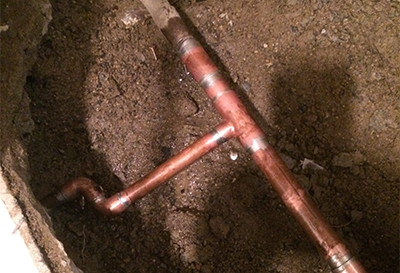Exactly how to Inspect If Your Home Has a Covert Leak
Exactly how to Inspect If Your Home Has a Covert Leak
Blog Article
Just how do you feel in relation to Locating water leaks?

Early discovery of dripping water lines can alleviate a prospective catastrophe. Besides saving you cash, it will certainly decrease the irritation as well as irritation. The minute you find a leak, calling your plumber for fixings is the very best service. Nevertheless, some tiny water leakages may not be visible. Below are some hacks that assist if you can not detect it with your naked eyes.
1. Examine the Water Meter
Examining it is a surefire means that assists you find leaks. If it relocates, that shows a fast-moving leak. This suggests you may have a sluggish leakage that could even be below ground.
2. Check Water Intake
Assess your water expenses as well as track your water intake. As the one paying it, you should notice if there are any type of discrepancies. If you spot sudden changes, despite your consumption coinciding, it means that you have leaks in your plumbing system. Remember, your water bill should fall under the same range monthly. An abrupt spike in your costs indicates a fast-moving leak.
Meanwhile, a constant increase every month, despite having the same routines, reveals you have a sluggish leak that's also slowly intensifying. Call a plumber to completely check your residential or commercial property, specifically if you really feel a cozy location on your flooring with piping below.
3. Do a Food Coloring Test
When it comes to water usage, 30% comes from bathrooms. If the color in some way infiltrates your dish throughout that time without flushing, there's a leakage between the tank and also dish.
4. Asses Exterior Lines
Don't forget to examine your exterior water lines also. Should water leak out of the connection, you have a loose rubber gasket. One little leakage can throw away loads of water as well as surge your water bill.
5. Evaluate the situation as well as inspect
Property owners ought to make it a practice to examine under the sink counters as well as also inside cupboards for any bad odor or mold and mildew development. These 2 red flags indicate a leakage so timely attention is called for. Doing regular examinations, even bi-annually, can save you from a major issue.
Examine for discolorations and also deteriorating as most appliances as well as pipelines have a life expectancy. If you presume leaking water lines in your plumbing system, don't wait for it to escalate.
Early discovery of dripping water lines can mitigate a prospective calamity. Some tiny water leaks may not be noticeable. Examining it is a surefire way that aids you uncover leakages. One little leakage can lose tons of water and increase your water costs.
If you believe dripping water lines in your plumbing system, don't wait for it to escalate.
How to Know If Your Home Has a Hidden Leak
Water Meter Reveals Inexplicable Water Usage
If you’d like to test whether or not there’s a leak somewhere in your home, you can do this using your water meter. Here is how to conduct the test:
Don’t use any water in your home for at least 30 minutes; this also means not turning on faucets or water-using appliances.
Go outside, and check your water meter for activity.
If your water meter shows that there was activity, even though no one was using any water, this proves that there is a leak in your home.Visible Mold or Mildew Growth
Leaks behind walls create moist, dark environments that allow mold and mildew to grow and thrive. Eventually, you might see mold growth forming on the wall closest to a hidden leak.
If mold is growing in an area that receives a high amount of moisture, such as a bathroom, it may simply be an indication that better ventilation is needed. However, if you see mold growth on a wall or the ceiling in an area where you would not expect, you probably have a hidden leak.
Musty, Mildew Odor
Sometimes you might not be able to see the mold or mildew that is growing as a result of a leak. However, the smell can give the problem away just as easily. If you catch a whiff of something musty, there’s a good chance that old water is collecting somewhere in your home that you can’t see.
Stained/Warped Walls, Ceilings, or Floors
When your home soaks up water, a variety of red flags can become visible, including ceiling stains, bubbling drywall, warped walls, and sagging floors. While these issues can be caused by excess humidity, they can also be signs that a pipe or plumbing connection has started leaking behind your walls.
Inexplicably High Water Bill
After a while, you get a general sense for what your water bill should be. If you own a pool or sprinkler system, your bill will tend to be higher during summer. However, if you receive a water bill that seems especially high, and you can’t figure out what caused it, then you may have a hidden leak somewhere that’s increasing your bill.
https://www.plumbingjoint.com/blog/2019/july/how-to-know-if-your-home-has-a-hidden-leak/

As an avid reader on Finding hidden leaks, I imagined sharing that topic was really useful. You should set aside a second to share this page if you enjoyed it. We take joy in reading our article about Locating water leaks.
Report this page